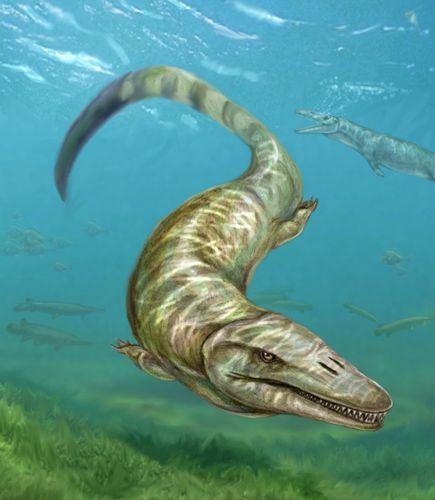According to a new study, fossils belonging to an 84-million-year-old freshwater sea monster have been found in Hungary. The new creature was discovered in the waste dump of a coal mine in western Hungary.
The recently unearthed creature belongs to a family of ancient aquatic reptiles known as mosasaurs, which looked like crosses between crocodiles and whales. Mosasaurs lacked the superlong necks found in plesiosaurs, which the legendary inhabitant of Loch Ness is alleged to be.
Dubbed Pannoniasaurus, the creature is the first mosasaur thought to spend its entire life in freshwater.
“The evidence we provide here makes it clear that similar to some lineages of [whales], mosasaurs quickly adapted to a variety of aquatic environments,” study leader László Makádi, a paleontologist at the Hungarian Natural History Museum.

Scientists uncovered thousands of fossils belonging to several Pannoniasaurus individuals ranging from one meter (three feet) to 4 meters (13 feet) in length at the Hungarian site.
The smaller fossils, which belonged to juvenile mosasaurs, are a rare find, scientists say.
“We generally get the big guys,” explained study co-author Michael Caldwell, a mosasaur expert at the University of Alberta in Canada. “Finding young or even smaller-bodied versions is as rare as hen’s teeth in the fossil record of mosasaurs.”
The discovery of so many Pannoniasaurus specimens at one site also suggests the species was a true freshwater dweller and not just a marine mosasaur that occasionally ventured into rivers, the way some sharks do. Pannoniasaurus lived in freshwater rivers that cut through the islands and flowed into the seaway. These rivers were home to fish, amphibians, turtles, lizards, crocodiles, and dinosaurs—the remains of which have all been found at the coal mine site. With its large size, Pannoniasaurus was “probably the crown predator in the ecosystem,” Caldwell said.
“I doubt it was a gigantic predator,” Caldwell said. “It was probably just catching fish and perfectly happy doing that.”
Unlike other marine mosasaurs that swam using large flippers, the limbs of Pannoniasaurus still resembled legs, which may have been useful for occasionally clambering onto land.
“Pannoniasaurus could well have been amphibious,” Caldwell said. “I suspect they behaved a lot like modern crocodiles do today. They spent a lot of time in the water, but there’s nothing wrong with crawling from river to river when things dry up or even using shallow water to bask and moderate their body temperature.”
The freshwater sea monster study was published online in the journal PLoS ONE.
N.
Via: NatGeo

